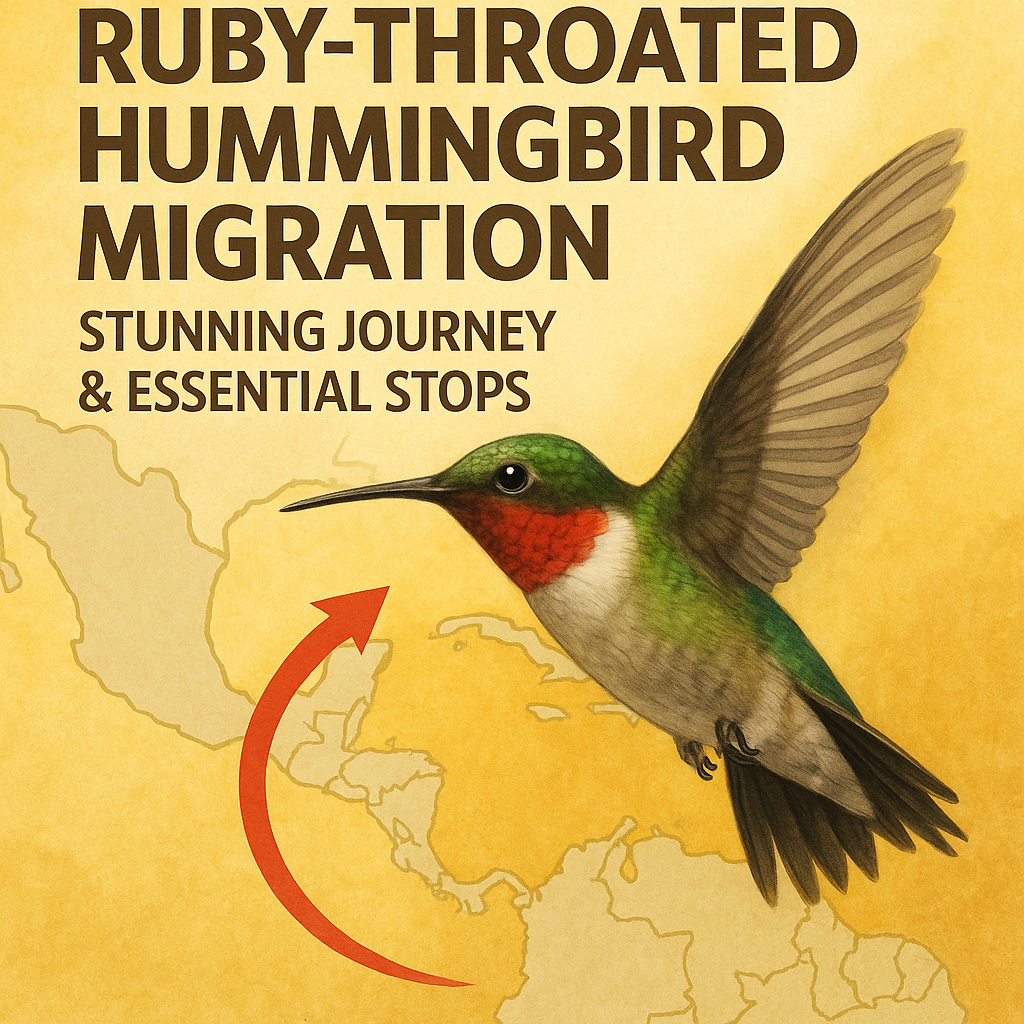Ruby Throated Hummingbird Migration: Stunning Journey & Essential Stops
The Migration Journey of the Ruby-Throated Hummingbird: Destination, Distance, and Survival
The ruby-throated hummingbird’s migration is one of nature’s most incredible feats, combining endurance, navigation, and survival within a tiny frame. Every year, these iridescent birds embark on a remarkable journey that showcases their resilience and adaptability. Understanding where the ruby-throated hummingbird migrates to, how it travels, the distance covered, what it encounters upon arrival, the energy demands of this journey, and whether it makes stopover points provides fascinating insights into one of the most extraordinary migratory phenomena in the bird world.
Where Will the Ruby-Throated Hummingbird Migrate To?
Ruby-throated hummingbirds breed primarily in the eastern United States and southern Canada during the warmer months. As autumn approaches and temperatures drop, they migrate south to spend the winter in Central America, primarily in Mexico and countries like Guatemala, Belize, and Honduras. Some may also winter in the southernmost parts of Texas and Florida.
The choice of this migration destination is strategic: these regions offer a mild climate and abundant flowering plants year-round, ensuring a steady supply of nectar, the hummingbird’s primary food source. The migration allows the ruby-throated hummingbird to escape the cold northern winters and maintain access to vital resources.
How Does the Ruby-Throated Hummingbird Get There?
The migration route of the ruby-throated hummingbird is both remarkable and demanding. Unlike many migratory birds that follow coastlines or stop frequently, ruby-throated hummingbirds make an incredible nonstop flight across the Gulf of Mexico. This body of water, stretching roughly 500 miles, represents one of the most challenging legs of their journey.
To accomplish this, hummingbirds rely on a combination of instinctual navigation and physiological adaptations. They use celestial cues, the position of the sun, and Earth’s magnetic field to guide their way. Moreover, their bodies prepare extensively for this crossing by accumulating fat stores that serve as energy reserves for the long haul.
How Far is the Trip?
The complete migration undertaken by ruby-throated hummingbirds can range from about 1,200 to 2,500 miles, depending on their starting location. Birds breeding in southern Canada travel farther than those breeding in the southern U.S. The Gulf of Mexico crossing itself is approximately 500 miles of nonstop flight – an extraordinary distance for such a small bird, often weighing only 3 grams.
This journey usually takes place during the night to avoid predators and make use of cooler, calmer air conditions. The sheer perseverance needed for such a flight underscores the hummingbird’s incredible endurance despite its diminutive size.
What Will the Ruby-Throated Hummingbird Find When It Gets There?
Upon arrival in their wintering grounds, ruby-throated hummingbirds find a vastly different environment from their breeding habitats. The tropical and subtropical climates of Central America and southern Mexico provide plentiful flowers year-round, which means nectar is available continuously.
Aside from abundant food, these regions offer suitable shelter and relatively stable weather conditions, important for conserving energy while resting and molting. The birds establish territories and compete for nectar sources much like they do in their summer ranges. Additionally, their tropical winter homes are free from the cold stresses and insect scarcity common in northern climates during winter.
How Much Energy Will the Ruby-Throated Hummingbird Consume?
The energy consumption of ruby-throated hummingbirds during migration is staggering for their size. Traveling nonstop across the Gulf requires an immense expenditure of fat reserves. A hummingbird can burn nearly 50% of its body weight during this crossing alone.
To manage such energy demands, they enter a state called torpor at night — a kind of hibernation where their metabolic rate drops, conserving energy during rest periods. Prior to migration, hummingbirds enter a hyperphagic state, eating almost constantly to build up fat, which becomes their fuel throughout the trip.
Does the Ruby-Throated Hummingbird Have Any Stopover Points During Migration?
Despite the nonstop flight over the Gulf of Mexico, ruby-throated hummingbirds do make stopovers during the rest of their migratory journey. Prior to the Gulf crossing, they often rest and refuel along the Gulf Coast, particularly in Texas, Louisiana, and coastal Florida. These stopover sites are critical as they allow the hummingbirds to replenish fat reserves to prepare for the grueling ocean crossing.
On the return north in spring, the birds also use stopover sites along the Gulf Coast and sometimes other areas with abundant flowers and feeders. These rest points are vital, especially for juveniles and others that may lack the stamina or energy reserves to tackle the full Gulf crossing without pause.
Conclusion
The migration of the ruby-throated hummingbird is a testament to endurance and precision in the natural world. Traveling thousands of miles from their summer homes in the U.S. and Canada to wintering grounds in Central America, these tiny birds combine instinct, incredible energy management, and relentless determination to survive. The nonstop Gulf of Mexico crossing, the energy-intensive nature of the journey, and the critical stopover points highlight the complex strategy behind this migration. For anyone fortunate enough to observe their arrival or departure, the journey of the ruby-throated hummingbird offers a glimpse into one of nature’s most awe-inspiring adventures.






